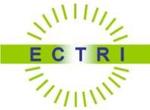| Authors: | Erik Figenbaum |
| Report nr: | 1627/2018 |
| ISBN (digital version): | 978-82-480-2135-3 |
| Language: | English |
| Attachments | Summary Full report - in English only Sammendrag |
Battery electric vehicles (BEVs) reached in 2017 a market share of 20% in Norway, and a fleet share of 5.1%. This impressive development is the result of large incentives and a stable long term BEV-policy, but not nearly enough to meet the Parliaments target of only selling zero emission vehicles by 2025. Up to 2018, the main BEV user group has been multi-vehicle households replacing one vehicle. After 2025 all single vehicle households must buy BEVs, and BEVs must replace all vehicles in multi-vehicle households. A flow of new BEVs with longer range coming on the market the coming years will aid, but traffic on peak travel days can become a major barrier. It may not be economic to build out charging infrastructure capacity to absorb these peaks. Users will thus confront a trade-off between daily cost and time savings and longer stops and charging queues on long distances.





